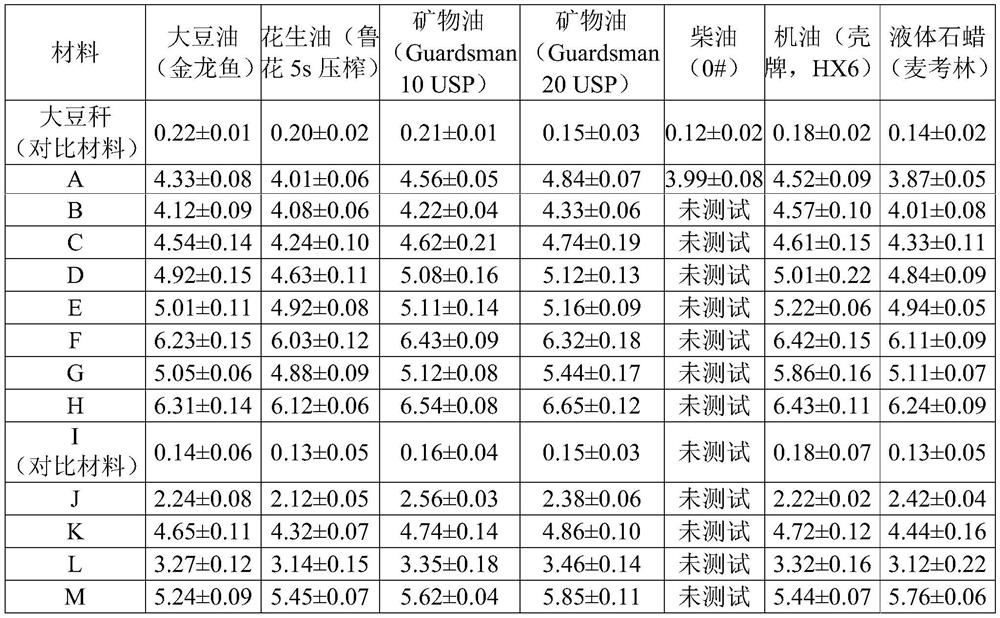Application of degradable composite material in oil absorption
A composite material and waste technology, which is applied in the fields of adsorption water/sewage treatment, grease/oily substance/float removal device, water/sludge/sewage treatment, etc. Biodegradation and other issues, to achieve the effect of easy transportation and storage, good flotation, easy recycling and post-processing
- Summary
- Abstract
- Description
- Claims
- Application Information
AI Technical Summary
Problems solved by technology
Method used
Image
Examples
Embodiment approach
[0061] In the method of the present invention, it may also include the step of preparing the degradable composite material, and post-processing (such as incineration) the degradable composite material after use or absorbing oil, and the step of recycling the heat generated by incineration , so as to maximize the value of degradable composite materials and minimize carbon emissions. Therefore, according to a specific embodiment, the method includes the following steps:
[0062] (1) Preparation of degradable composite materials;
[0063] (2) contacting the degradable composite material with oil;
[0064] (3) Post-processing the oil-absorbed degradable composite material in step (2), the post-processing being at least one selected from reuse and incineration.
[0065] It should be noted that the specific content of the degradable composite material and oil (including raw materials, preparation methods and performance parameters, etc.) is as described above, and will not be repe...
preparation Embodiment 1
[0068] The bacterial strain of the cereus spp. (hereinafter referred to as YY bacteria) was transferred into the slant of the Kerner flask, and cultured at 25° C. for 7 days with PDA medium to obtain the slant bacterial strain.
[0069] The preparation method of PDA medium: take 200g of peeled potatoes, cut into small pieces, add 1L of water, boil for 30min, filter out the potato pieces, and make up the filtrate to 1.0L, which is the potato extract. Add 20.0 g of glucose and 15.0 g of agar to 1.0 L of potato extract, at natural pH, and sterilize at 121 °C for 20 min.
[0070] The slant strains were inserted into the liquid culture medium of first-grade seeds. The mass percent formula of the culture medium was: 2% soluble starch, 0.6% dry corn steep liquor powder, 0.1% potassium dihydrogen phosphate, natural pH, and sterilized at 121°C for 20 minutes. Culture conditions: liquid volume is 150mL / 500mL baffle Erlenmeyer flask, inoculum size is about 3cm 2 The bacterial lawn was c...
preparation Embodiment 2
[0073] The strain of Pleurotus rugosa (purchased from China General Microorganism Collection and Management Center, CGMCC 5.759) was transferred into the slant of the Kerner flask, cultured at 25°C for 7 days with PDA medium, and the strain of the slant was obtained.
[0074] The slant strains were inserted into PDW (Potato Dextrose Water) medium (Qingdao Rishui Biotechnology Co., Ltd.), with natural pH, and sterilized at 121°C for 20 minutes. Culture conditions: liquid volume is 150mL / 500mL baffle Erlenmeyer flask, inoculum size is about 3cm 2 The bacterial lawn was cultivated in a shaker at 25° C. at 150 rpm for 3 days to obtain a seed solution for solid cultivation (the dry weight of biomass was 9 g / L).
PUM
| Property | Measurement | Unit |
|---|---|---|
| density | aaaaa | aaaaa |
| surface tension | aaaaa | aaaaa |
| density | aaaaa | aaaaa |
Abstract
Description
Claims
Application Information
 Login to View More
Login to View More - R&D
- Intellectual Property
- Life Sciences
- Materials
- Tech Scout
- Unparalleled Data Quality
- Higher Quality Content
- 60% Fewer Hallucinations
Browse by: Latest US Patents, China's latest patents, Technical Efficacy Thesaurus, Application Domain, Technology Topic, Popular Technical Reports.
© 2025 PatSnap. All rights reserved.Legal|Privacy policy|Modern Slavery Act Transparency Statement|Sitemap|About US| Contact US: help@patsnap.com



